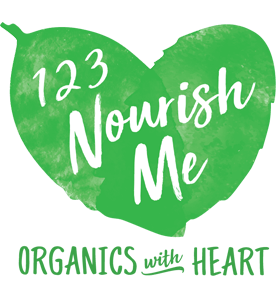Okay it’s time we break down MSG and learn how to look for it in our kids foods! Many of us are feeding this to our kids daily without even realising. MSG has snuck into so many processed and packaged foods – everything from commonly purchased breakfast cereals to lunchbox snacks – even in baby food! Yikes!
Okay so what is it and why is it a problem?

THE HISTORY BREAKDOWN

MSG, or monosodium glutamate, was used as a flavour enhancer or flavour booster extracted from seaweeds in China.
In the 1970′s, researchers found that pharmaceutical MSG would kill brain cells in a laboratory. Shortly after they realised that commercially available MSG would have the same effect.

Isn’t it natural?

Well yes and no. MSG is simply the addition of one (mono) sodium molecule to the amino acid glutamic acid, which is found naturally in many foods. When any amino acid builds up in the body, most people have the ability to break it down in the liver without alarm. However, some amino acids, such as glutamic acid (glutamate) and aspartic acid (aspartame or “nutra sweet”), may be more difficult to convert and flush out of the body.
Both glutamate and aspartame cause the nerves to fire, and when they are in excess, the nerves can fire excessively and cause a form of neurotoxicity.
For this reason MSG is known as an ‘excitatory neurotransmitter’, meaning that it stimulates nerve cells in order to relay its signal. Some people claim that MSG leads to excessive glutamate in the brain and excessive stimulation of nerve cells. For this reason, MSG has been labeled an ‘excitotoxin’ When you see kids having a tantrum sometimes it can be from their brains being overloaded and unable to self regulate due to an intake of excessive glutamate. Other people can show a red face or experience shortness of breath.
These reactions — known as MSG symptom complex — include:
- Headache.
- Flushing.
- Sweating.
- Facial pressure or tightness.
- Numbness, tingling or burning in the face, neck and other areas.
- Rapid, fluttering heartbeats (heart palpitations)
- Chest pain.
- Nausea.
- Tantrums in children
Children are more susceptible to excitotoxin damage than adults. A child’s brain is 4 times more sensitive to excitotoxins than an adults brain.
Common immediate reactions as a result of consuming these excitotoxins can cause behavioural disorders such as ADHD, learning difficulties, sleeping issues, nausea and stomach cramps.

Isn’t MSG found naturally in foods?

While it’s true some forms of MSG can be naturally occurring in foods such as tomato and potatoes our bodies can deal with it in it’s natural state far more easily than synthetically added MSG which is often in much higher doses than naturally occurs in foods. Glutamic acid found in unadulterated “whole food” protein does not cause adverse reactions. To cause adverse reactions, the glutamic acid must have been processed/manufactured or come from protein that has been fermented. So in summary – whole foods are not a problem – only synthetically added MSG tend to cause reactions in people.
TASTE BUD CHANGER
So we know of MSG’s role as a flavour enhancer but there is another issue that can impact our kids. Concentrated free glutamic acid or MSG act as nerve stimulants and will change how the taste buds taste food. Even a really bad tasting food will taste fantastic when high levels of glutamic acid are introduced as a flavour enhancer.

How can I tell if a food has MSG in it?

This is where it gets tricky!!! MSG can be found hidden in many different names. You will rarely look at an ingredient list and see MSG written. In fact many products that contain MSG will even say on the front ’no added MSG’ because it is in the ingredient list under a variety of different forms and different names.
MSG doesn’t have to be declared when a food is not required to bear a label, for example in restaurant or takeaway food. When glutamates and glutamate salts are naturally present in a food (e.g. in meat, or in mushrooms), or in an ingredient of a food (e.g. in yeast extract, or hydrolysed vegetable protein (HVP)) they don’t have to be labelled. Manufacturers don’t need to label these foods as containing MSG unless the “added ingredient” is 99% pure MSG.
If MSG is produced as a result of protein hydrolysis or a byproduct of protein processing, manufacturers do not not require MSG to appear on the label.
A product labeled “No MSG” may still have MSG or free glutamic acid as a result of protein processing, as long as pure MSG was not added.
The truth is that protein-hydrolysis-based glutamates or MSG are found in just about every highly processed food. Even vegetable proteins are hydrolyzed to make veggies burgers and many other frozen or pre-prepared vegan and “health foods.”

Lets sum this up!

- MSG or free glutamates as a flavour enhancer is found in highly processed foods, usually under an alias to make it impossible to know for sure what you are eating.
- MSG or free glutamic acid is also found in many health foods as a result of vegetable protein breakdown or hydrolysis. These MSGs or free glutamic acids are not added into food as a flavour enhancer but exist in varying quantities in many foods as a result of protein breakdown.
- Some of us break down glutamates better than others, so when it comes to glutamates as a result of protein breakdown, this is a highly personal variance in reactions. . However, MSG as a flavour enhancer should simply be avoided.

want to learn more? Watch here:


Okay are you ready for the list?
You can download this for FREE!





Thanks for the great video, it was very informative.
Could I please have a copy of the list?
Thanks,
Madeleine : )